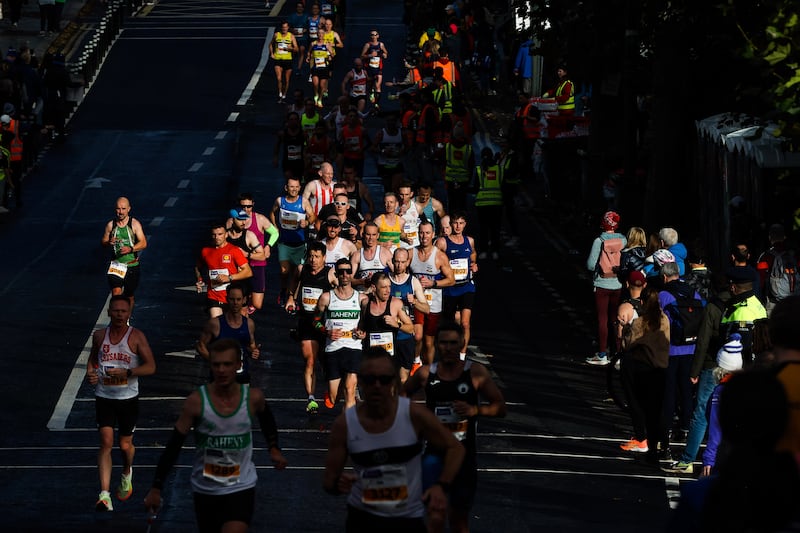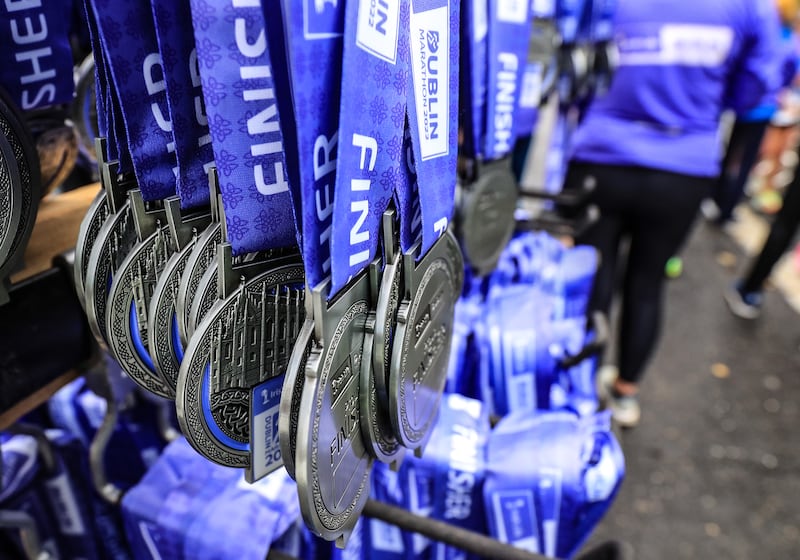All marathon journeys are about reaching your destination: the finish! In the last of our monthly series, this question-and-answer session should ensure that journey is made easier – all the way to the finish of the Irish Life Dublin Marathon this Sunday.
1 So that’s all the long, hard training done, legs up and bowls of pasta for the rest of the week?
Not exactly. Aim for a day or two of no running, keep things ticking over on the others. Plenty of gentle stretching too, with an easy jog on the morning before. Do pay more attention to eating and sleeping well, just go easy the evening before and don’t chance anything different. The clocks going back also afford an extra hour in bed, remember!
2 What’s the other most important thing on the ‘to-do’ list this week besides from all this resting?
READ MORE
Planning for your race number and pack pickup. This only happens in person at the Irish Life Dublin Marathon Expo in the Main Hall of the Royal Dublin Society (RDS) this Friday, October 27th (12-6pm) and then Saturday, October 28th (9am-7pm).
The actual cut-off time for pack collection is 6pm on the Saturday. After all those long, hard miles clocked up by now, there’s no excuse whatsoever for missing that. Remember at the baggage drop-off, only the clear plastic bags provided at registration are allowed.
[ Choose running: Overcoming addiction issues to train for the Dublin MarathonOpens in new window ]
3 How early should I plan to arrive before the race start on Sunday?
That depends on how far you’re coming from. Some people can’t help it if they’re lucky enough to walk to the race start at Fitzwilliam Street Upper from where they live, for others it may involve a journey of several hours.
Plan for at least an hour before, allowing time for a very gentle 10-minute jog. Make sure you’re also well familiar with the start area and race-entry routes at Fitzwilliam Street. The course remains open for seven hours from when the last person crosses the start line.

5 So I’ve got my designated Wave start, but can I swap, believing I can run faster on Sunday now?
No, all wave positions are allocated by your own predicted finishing times, so you can only start in your allocated waves. It doesn’t make any difference in the end anyway, your start time only begins once you cross the starting line.
In all, the Dublin Marathon has five different start times, starting with the wheelchair participants at 8:40am, followed by the main Wave 1 start at 8:45am, then Wave 2 at 9:05am, Wave 3 at 9:25am and Wave 4 at 9:45am. Also familiarise yourself as much as possible with the race route.
6 What about breakfast that morning?
Again, don’t chance anything different, regular caffeine consumption included. Less is probably more, leaving ample time for digestion too, ideally about two hours before your wave start. Munching on a banana or two just before the start is grand; just don’t chance consuming anything you haven’t tried already during the race.
7 Should I consider bringing my own water supply?
Not necessarily so, unless that’s already been a part of your training routine. Like any big city marathon, Dublin has ample refreshment stations, 10 in total. Look at the map and note in advance where exactly they are.
Also note what’s on offer: 250ml bottles of Ishka water are provided, the Lucozade Sport stations serve cups in a variety of flavours, Enervit gels are also supplied at two stations on the route. Again, if you haven’t tried that particular brand before, now is probably not the time.
8 Is it easier to count down my progress in miles or kilometres?
It doesn’t matter what you’re counting – the 138,336ft, or 60,000-odd strides for that matter – it doesn’t get any shorter, and there are certainly no shortcuts. Note, however, the Dublin Marathon is only marked at every mile, and every 5km, and of course the halfway point.

9 Should I consider following one of the designated Dublin Marathon pacers?
If you’re confident and feeling safe in your target finish time this is definitely a good idea, Dublin providing different sets of pacers on the day.
The pacers run at a steady effort throughout, aiming to finish a few seconds under each time band. Pacers are allocated to each wave as follows: Wave 1- 3:00, 3:10, 3:20; Wave 2 – 3:30, 3:40, 3:50; Wave 3 – 4:00, 4:10, 4:20; Wave 4 – 4:30, 4:40, 4:50, 5:00. There is no requirement to sign up or commit to any pacing group in advance. Simply turn up at your wave start, look for the pacing runners wearing large balloons, and stand in behind the corresponding time.
10 Any advice if I happen to hit the wall?
If? Happen? You mean when! Besides from being prepared to invent coarse and insulting names to shout out loud at yourself (just kidding), the best advice is to just ease back a little, work your way through it.
This is also the time to think hard about good running style; running with the legs, and not on them; minimal knee lift, arms swinging just below waist level, softly tensioned as if carrying a leaf stick in either hand. Think about some stride rhythm too, something like stepping over a barrel, stepping over a barrel, stepping over a barrel ...
11 And all downhill from there to the finish, right?
Actually, once you get over Roebuck Hill, it more or less is. That’s assuming you followed the original and still best piece of marathon advice: It’s not the distance that kills, it’s the pace.















